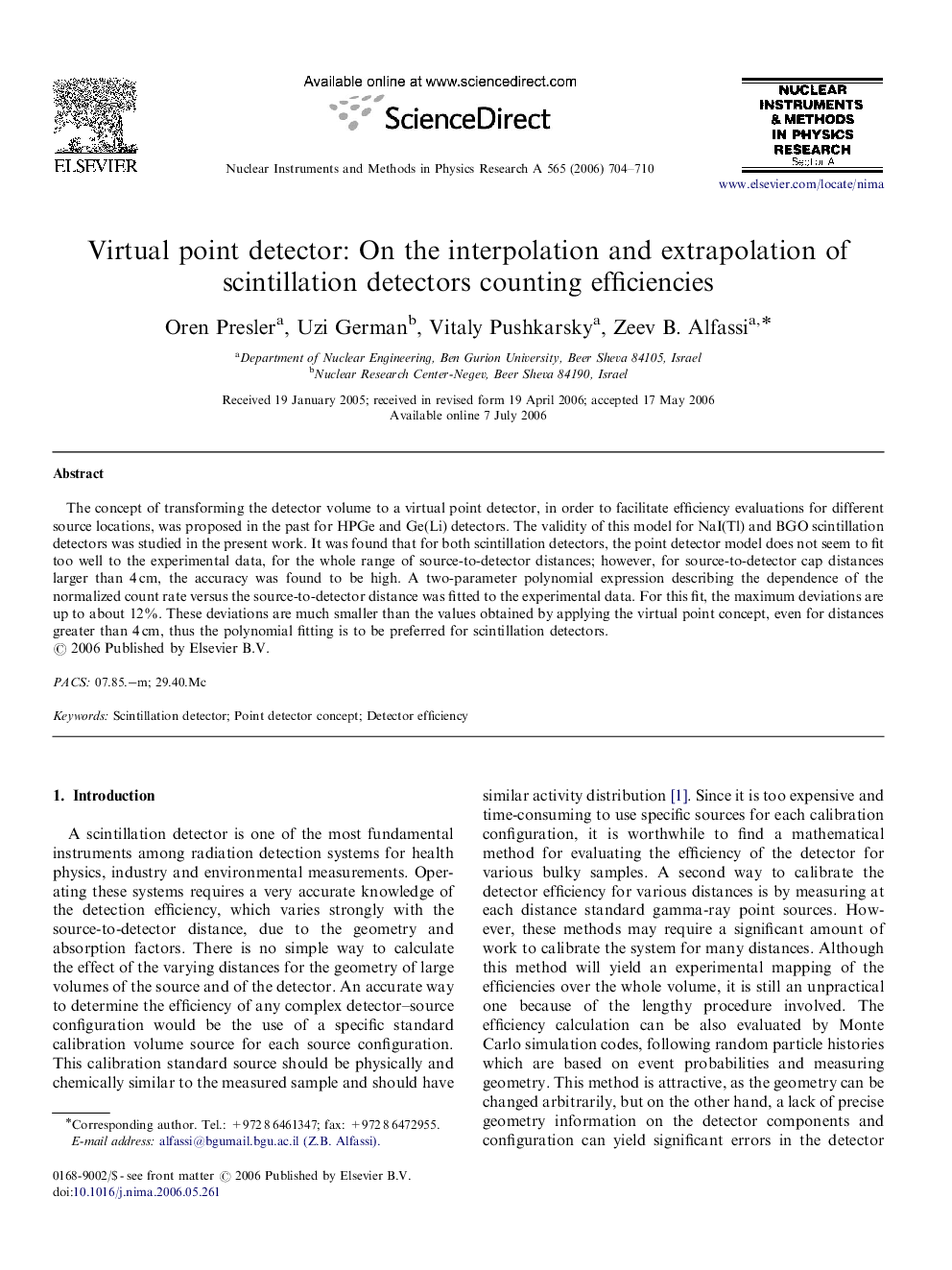| Article ID | Journal | Published Year | Pages | File Type |
|---|---|---|---|---|
| 1832561 | Nuclear Instruments and Methods in Physics Research Section A: Accelerators, Spectrometers, Detectors and Associated Equipment | 2006 | 7 Pages |
The concept of transforming the detector volume to a virtual point detector, in order to facilitate efficiency evaluations for different source locations, was proposed in the past for HPGe and Ge(Li) detectors. The validity of this model for NaI(Tl) and BGO scintillation detectors was studied in the present work. It was found that for both scintillation detectors, the point detector model does not seem to fit too well to the experimental data, for the whole range of source-to-detector distances; however, for source-to-detector cap distances larger than 4 cm, the accuracy was found to be high. A two-parameter polynomial expression describing the dependence of the normalized count rate versus the source-to-detector distance was fitted to the experimental data. For this fit, the maximum deviations are up to about 12%. These deviations are much smaller than the values obtained by applying the virtual point concept, even for distances greater than 4 cm, thus the polynomial fitting is to be preferred for scintillation detectors.
